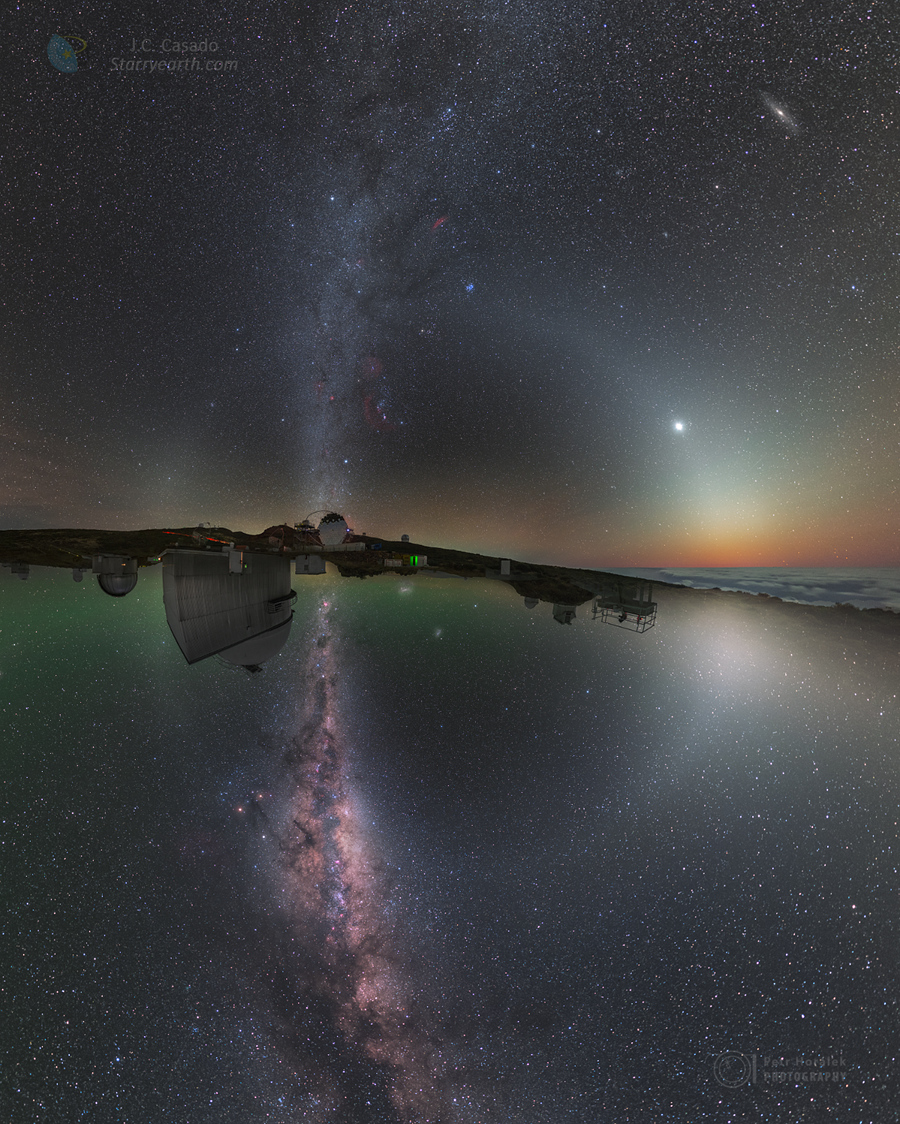两个半球的夜空
2020 February 27
Two Hemisphere Night Sky
Image Credit & Copyright: Petr Horálek/ESO, Juan Carlos Casado/IAC (TWAN)
Explanation: The Sun is hidden by a horizon that runs across the middle in this two hemisphere view of Earth’s night sky. The digitally stitched mosaics were recorded from corresponding latitudes, one 29 degrees north and one 29 degrees south of the planet’s equator. On top is the northern view from the IAC observatory at La Palma taken in February 2020. Below is a well-matched southern scene from the ESO La Silla Observatory recorded in April 2016. In this projection, the Milky Way runs almost vertically above and below the horizon. Its dark clouds and and bright nebulae are prominent near the galactic center in the lower half of the frame. In the upper half, brilliant Venus is immersed in zodiacal light. Sunlight faintly scattered by interplanetary dust, the zodiacal light traces the Solar System’s ecliptic plane in a complete circle through the starry sky. Large telescope domes bulge along the inverted horizon from La Silla while at La Palma, multi-mirror Magic telescopes stand above center. Explore this two hemisphere night sky and you can also find the Andromeda Galaxy and the Large and Small Magellanic Clouds.
Tomorrow’s picture: pixels in space
两个半球的夜空
影像来源及版权:Petr Horálek/ESO, Juan Carlos Casado/IAC (TWAN)
说明:在这张两个半球的地球夜空照中,太阳隐没在横跨中央的地平线下。使用数字技术拼接出的这幅图像是在位于北纬29度和南纬29度的两个相对的地点拍摄的。上半图是2020年2月在拉帕尔马的IAC天文台的北天景象,下半部分则是正好与之相配的ESO拉西亚天文台所见的南天,拍摄于2016年4月间。在这幅投影图中,上下两部分银河几乎垂直于地平线。在下半部靠近银心的方向,暗带和亮星云都很明显。在上半图里,明亮的金星浸没在黄道光中。由行星际尘埃微弱地散射阳光而形成的黄道光反映出太阳系的黄道平面,在夜空中呈现为一个完整的圆环。被翻转的拉西亚地平线上是大望远镜的圆顶,而拉帕尔马地平线中央之上是多镜面的MAGIC望远镜(大型大气伽马射线成像切伦科夫望远镜)。浏览这幅双半球的夜空影像,你还可以找到仙女座大星系和大、小麦哲伦云。
明日一图预告:pixels in space

